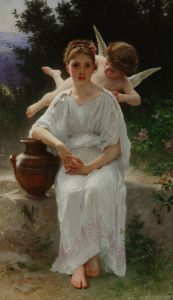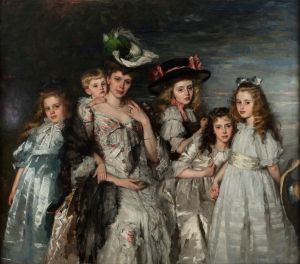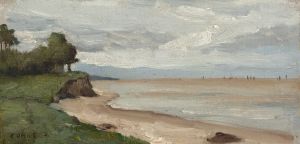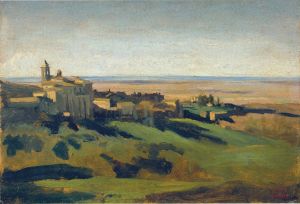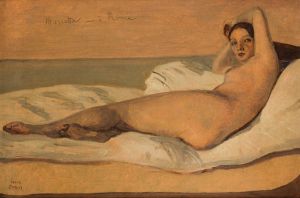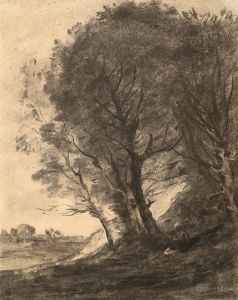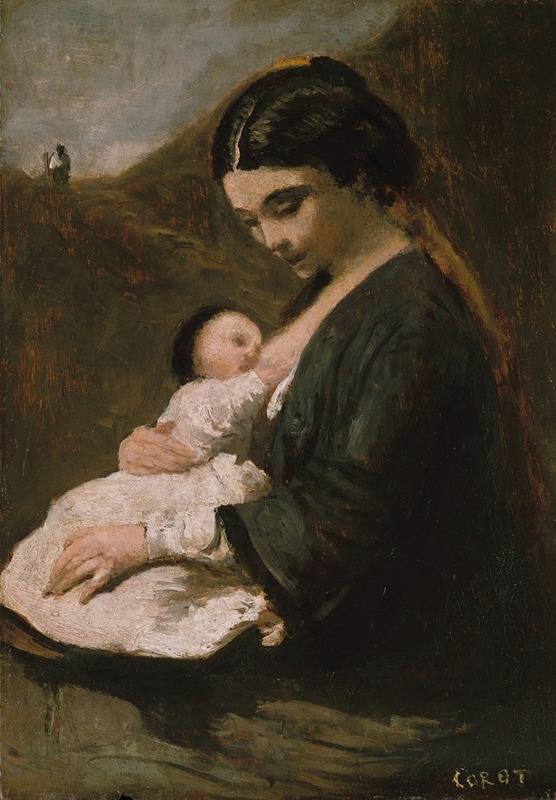
Mother and Child
A hand-painted replica of Jean-Baptiste-Camille Corot’s masterpiece Mother and Child, meticulously crafted by professional artists to capture the true essence of the original. Each piece is created with museum-quality canvas and rare mineral pigments, carefully painted by experienced artists with delicate brushstrokes and rich, layered colors to perfectly recreate the texture of the original artwork. Unlike machine-printed reproductions, this hand-painted version brings the painting to life, infused with the artist’s emotions and skill in every stroke. Whether for personal collection or home decoration, it instantly elevates the artistic atmosphere of any space.
Jean-Baptiste-Camille Corot was a prominent French landscape and portrait painter, associated with the Barbizon School, which was a movement towards realism in art. While Corot is primarily known for his landscapes, he also produced a number of portraits and figure studies throughout his career. One of his works in this genre is "Mother and Child."
"Mother and Child" by Jean-Baptiste-Camille Corot is a painting that exemplifies his ability to capture intimate human moments with a sense of tranquility and grace. Although Corot is not as widely recognized for his figure paintings as he is for his landscapes, this work demonstrates his versatility and skill in portraying human subjects.
The painting typically features a mother holding her child, a theme that has been explored by many artists throughout history. Corot's interpretation of this timeless subject is marked by his characteristic soft brushwork and a delicate use of light, which imbues the scene with a gentle, serene atmosphere. The figures are often rendered with a sense of tenderness and affection, highlighting the bond between the mother and her child.
Corot's approach to painting was influenced by his extensive travels and his study of the Old Masters, particularly during his time in Italy. His exposure to the works of artists such as Titian and Veronese can be seen in his treatment of light and composition. In "Mother and Child," Corot's use of a muted color palette and subtle gradations of tone create a harmonious and balanced composition that draws the viewer's attention to the emotional connection between the figures.
The painting reflects Corot's interest in capturing the essence of his subjects rather than focusing on intricate details. This approach allows the viewer to engage with the emotional core of the scene, rather than being distracted by extraneous elements. Corot's ability to convey emotion through simplicity is one of the hallmarks of his style and is evident in "Mother and Child."
While specific details about the creation and history of "Mother and Child" are not extensively documented, it is consistent with Corot's broader body of work, which often explored themes of nature, humanity, and the interplay between the two. His figure paintings, though less numerous than his landscapes, contribute to his reputation as a master of capturing the quiet beauty of everyday life.
Corot's influence on later artists, particularly the Impressionists, is well-documented. His ability to convey mood and atmosphere through light and color had a significant impact on painters such as Claude Monet and Camille Pissarro. "Mother and Child" serves as an example of how Corot's techniques and thematic interests resonated with future generations of artists.
In summary, "Mother and Child" by Jean-Baptiste-Camille Corot is a testament to the artist's skill in portraying intimate human relationships with sensitivity and grace. Through his use of light, composition, and a restrained color palette, Corot captures the essence of the bond between mother and child, creating a work that is both timeless and evocative.







